

 It’s great to have access to all this wine information… But watch out!
It’s great to have access to all this wine information… But watch out!
Most things we want to know about today, we can google in a few seconds. It’s terrific and it’s hard to imagine life without access to a search engine.
All those things that we look for and that pop up when we do a search – or that arrives in some newsletter in the inbox – someone has written them. But who? Do we read with critical enough eyes when we read about wine? Maybe, maybe not. I don’t think everyone does. People probably believe much of what they read on the Internet. It’s easy to accept as accurate things that are written and published.
But inaccuracies about wine are written and published all the time. Sometimes they are repeated by others indefinitely. It may be the same in all lines of businesses, but you judge the business you know.
The Internet democratises. Everyone can write and be self-appointed experts. Sometimes it feels like articles have been written in haste, with no time for research. There is no fact-checking, the all-important rule for good journalism.
The Internet is a goldmine for researchers if you follow another golden rule: check who is behind the information you find. Who has written it? What does that person stand for? Can you trust that this is impartial information? Which, of course, is even more critical when it comes to controversial topics such as organic wine, natural wine, biodynamic farming, pesticides, etc. But not only. It is probably just as important when it comes to countries and appellations and more. And of course, tips and recommendations on wines. Who’s behind it?
We have also seen a rather depressing development with advertising that pretends to look like journalism. You read an interview or recommendation of a wine and think a journalist or impartial wine taster has written it. You see it as an editorial article. But all too often it is disguised advertising. Cloaked.
The wine world is changing. Rules change, new appellations are created, new technologies and new producers appear. Everything ever written stays on the Internet. Which is good. But if you want reliable figures or current rules, you have to check if the text shows the date when it was published. Some websites have the habit of not displaying publication dates for their articles. (It is difficult to understand why.) Sometimes it doesn’t matter. But it can often be of great importance.
Everyone has the right to write and publish what they want about wine. Thus, it becomes up to the reader to read analytically, meticulously and carefully. And be source-critical.
Now, over to this month’s Brief.
On the subject of this month’s “leader”, one of the areas where there is often confusion is organics, biodynamics etc. For example, that it is difficult to understand all the various eco-certifications. In fact, it is straightforward. We have just started an article series where we explain everything you need to know about these concepts. See more in the Brief.
About wine tours in covid times
It was no surprise that the entire spring season of wine tours was cancelled. We have not made a single tour since we just managed to get home from the New Zealand wine tour in March.
Although things are starting to look much brighter, no one knows what it will look like in a few months. Today, most things move in the right direction in Europe. Disease statistics go down. Airlines start flying. So in many ways, it is positive. But a great deal of uncertainty remains. We are, of course, following developments closely. The crisis is affecting us and our business more than most.
So what do we do?
We think that it will be quite slow to get back to something “normal”. Tourism and travel will start on a small scale in the summer and a little more in the fall. But not much.
Some wine tour operators have simply closed shop. We have not. But it is, of course, not a normal situation. In practice, this means that we do our planning of future trips as usual, but with particular regard to the health situation. We plan for the tours to go ahead according to plan. But you can’t really know how the situation will develop so we have to be more flexible.
Two important things in this context:
1) If you have any questions or concerns about the tours, do not hesitate to contact us.
2) Once you start feeling the urge to travel to a wine district again, we really hope that you choose to travel there with us! We will be there for you.
Britt & Per
PS: Recommend to your friends to read the Brief !
– – – – –
What’s on at BKWine Tours
- Bordeaux, September 30 – October 4, 2020
- South America, Chile and Argentina, January 18 – 31, 2021
- New Zealand, February 18 – March 5, 2021
- South Africa, March 17 – 26, 2021
- Bordeaux, April 21-25, 2021
- Champagne, May 19-23, 2021
For more information please contact us on email or on phone (we’re on French time), or go to our wine travel site on www.bkwinetours.com!
We also make custom designed wine tours – on-demand tours for you and a group of friends, for your company (maybe to scout new winegrowers?), for a special event… We can combine winery visits and wine touring with other activities: gastronomic workshops, visit to an oyster farm, truffles hunting, cheese making, and more. More info on the custom designed and bespoke BKWine wine tours and travel here!
Read our book(s)
We have written several wine books, nine at the last count. One of them has been translated to English; the others are (so far) only available in Swedish. This is the one that is available in English: Biodynamic, Organic and Natural Winemaking, Sustainable Viticulture and Viniculture
All our books are on wine, but on different subjects: wines of the Languedoc, wine growing and wine making, the wines of France, Tuscany, Bordeaux, Piedmont, Burgundy, Champagne. Several have won prestigeous prizes and awards. Read more on our wine books.
From the World of Wine
In Brief
In short, news and stuff from the world of wine.
“Vin méthode nature”, a new (private) French label for “natural wines”
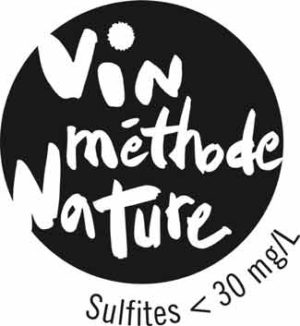 We often think of “natural” wine producers as rebellious. They go their own way. But still, a debate about having rules for natural wines has been going on ever since the natural wine trend started. And rules do exist. Italian VinNatur, for example, has since 2016 a strict regulatory framework for its around 180 members. (Read more on VinNature in our article.) In the spring of 2020, the “Syndicat de défense des vins naturels” (SDVN), an association of natural wine enthusiasts from mostly the Loire Valley, had its rules approved by the French authorities (DGCCRF). Putting “Vin Nature” on the bottle was not allowed, it is still forbidden. Instead, the brand “vin méthode nature” was adopted. A subtle but essential difference. The label is available in two versions, “without added sulphites” and with “<30 mg/l added sulphites”. Members must be certified organic, harvest manually and ferment with natural yeast. No additives (except sulphites as mentioned above) and no “brutal” processing aids during production (e.g. reverse osmosis) are allowed.
We often think of “natural” wine producers as rebellious. They go their own way. But still, a debate about having rules for natural wines has been going on ever since the natural wine trend started. And rules do exist. Italian VinNatur, for example, has since 2016 a strict regulatory framework for its around 180 members. (Read more on VinNature in our article.) In the spring of 2020, the “Syndicat de défense des vins naturels” (SDVN), an association of natural wine enthusiasts from mostly the Loire Valley, had its rules approved by the French authorities (DGCCRF). Putting “Vin Nature” on the bottle was not allowed, it is still forbidden. Instead, the brand “vin méthode nature” was adopted. A subtle but essential difference. The label is available in two versions, “without added sulphites” and with “<30 mg/l added sulphites”. Members must be certified organic, harvest manually and ferment with natural yeast. No additives (except sulphites as mentioned above) and no “brutal” processing aids during production (e.g. reverse osmosis) are allowed.
It has been reported in some media that “now France has an official ‘natural wine’ certification”. That is a misinterpretation. It is a private label, owned by the SDVN, but it has been approved as such and can be put on the label. So, it is not an official certification or label for “natural wine” but a private brand for a production method. We asked the INAO (Institut national de l’origine et de la qualité) who answered: “It is a private initiative and a private brand for which the founders are solely responsible. INAO is not responsible for this brand.” Producers in other EU countries can also join the association. So, yes, using the label is legal. But, no, it is not an official label. And since the term “natural wine” is still not defined nor approved (and likely will never be) anyone can still claim to make “natural wine”.
White wine is everywhere in Italy and it’s more than you think
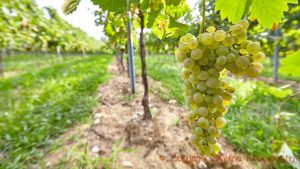 Most people probably see Italy as a red wine country. That is why the numbers are so surprising. 57% of Italian wine production is white wine. Prosecco and pinot grigio, the enormous successes of recent years in northern Italy, are of course one reason. But ten out of Italy’s twenty wine regions produce more than 50% white wine. The prosecco regions of Veneto and Friuli-Venezia-Giulia are the leading stars of white wine with 80% and 77% white, respectively. Trentino-Alto Adige, with its pinot grigio, makes just over 70% white.
Most people probably see Italy as a red wine country. That is why the numbers are so surprising. 57% of Italian wine production is white wine. Prosecco and pinot grigio, the enormous successes of recent years in northern Italy, are of course one reason. But ten out of Italy’s twenty wine regions produce more than 50% white wine. The prosecco regions of Veneto and Friuli-Venezia-Giulia are the leading stars of white wine with 80% and 77% white, respectively. Trentino-Alto Adige, with its pinot grigio, makes just over 70% white.
But even in several of the more southerly regions, white wine dominates. In Lazio and Liguria 70% is white, in Le Marche, Emilia Romagna and Apulia almost 55% and in Sicily nearly 60%. The 5 top white grapes in Italy:
- Glera, 27 000 hectares
- Pinot Gris, 25 000 ha
- Catarratto Bianco, 21 000 ha
- Trebbiano Toscano, 21 000 ha
- Chardonnay, 20 000 ha
Statistics from OIV and italianwinecentral.
Bulk wines are essential but need to work on their image
 Producers ship their wines to the end customer in different ways. Bulk wines are usually transported by boat in a flexitank container. It is an environmentally friendly way to transport wine. Bulk wines may not have the best reputation, but they are an essential part of the wine industry. In 2019, the bulk wine accounted for 34% of the total volume of wine exported worldwide. All wine countries export part of their production in bulk, some countries more than others. For Spain and the USA, bulk wine accounts for 55% of exports, for South Africa 50%, Australia 46% and Chile 42%.
Producers ship their wines to the end customer in different ways. Bulk wines are usually transported by boat in a flexitank container. It is an environmentally friendly way to transport wine. Bulk wines may not have the best reputation, but they are an essential part of the wine industry. In 2019, the bulk wine accounted for 34% of the total volume of wine exported worldwide. All wine countries export part of their production in bulk, some countries more than others. For Spain and the USA, bulk wine accounts for 55% of exports, for South Africa 50%, Australia 46% and Chile 42%.
They have a poor reputation because most of the bulk wine is unpretentious wines, for which the buyers have endlessly pushed prices down. Despite the large volume, bulk wines represent only 8% of the value of world exports.
The countries that export the highest proportion of their production in bottles are Portugal with 80%, Germany, 74%, France, 71% and Argentina, 67%. OIV.
Vin de France ten years later: for the big, the frustrated and the creative
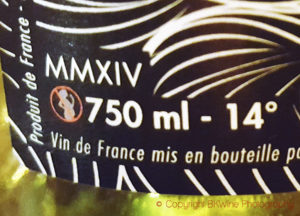 The “vin de france” category was introduced in 2009 when the EU did a restructuring of the various wine categories. “Vin de table” was renamed “vin de france”. A more attractive name for sure and, also, it was now allowed to put the vintage and the grape variety on the label. Vin de france is still a VSIG, thus a wine without a geographical origin (vin sans indication géographique). And without too many rules. Now it’s been ten years. How has it turned out?
The “vin de france” category was introduced in 2009 when the EU did a restructuring of the various wine categories. “Vin de table” was renamed “vin de france”. A more attractive name for sure and, also, it was now allowed to put the vintage and the grape variety on the label. Vin de france is still a VSIG, thus a wine without a geographical origin (vin sans indication géographique). And without too many rules. Now it’s been ten years. How has it turned out?
Fairly good. Vin de france accounts for around 8% of production. But the category is becoming more and more popular with producers. The large producers that make volume wines with large yields blend grapes from different parts of France. They are not looking for terroir character. More ambitious vin de france wines are made by winegrowers who believe that the rules of the appellations stand in the way of their creativity. Maybe they want to use grape varieties that are not approved or make wines that don’t fit the mould. Or they are just plain frustrated by the appellation system. Inexpensive vin de france is a straightforward, uncomplicated wine. More expensive vin de france can be high quality and exciting.
How to get happy bees in the vineyard
Making sure that they don’t harm the bees is vital for all farmers. Vines don’t need the help of bees for the fertilization, but there are still bees in the vineyards. The bees actually thrive here because there is a greater variety of vegetation around the vines compared to many other crops. So, it is a good idea to be careful when spraying.
Bees can be affected when spraying with insecticides but also when using herbicides and certain pesticides because they poison the pollen that the bees feed on. If you must use insecticides during May and June when both vines and many wild plants are in bloom, you should use a bee-friendly product. It would be best spraying when the bees are in their hives, in early morning or evening. You should see to it that your spraying is efficient and try to avoid spraying too haphazardly, creating drops that the bees can “drink”. This is just a few examples; there is much you can do to make the bees happy. Read more reussir
Features
Features that we have published during the past month, with lots of reading for you.
Virtual wine fairs and trade shows, here to stay?
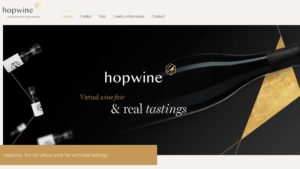 “The pure trade fairs for alcoholic drinks have been cancelled. But the other week I was invited to a virtual trade fair in France called Hopwine! As usual, the fair was only open to professional customers, ie importers, restaurants, sommeliers, wine writers, etc. The event took place during one week. During this time, as a registered visitor, you could connect online with 150 different wine producers from 7 countries and read about their more than 700 different wines. It was mostly wineries, cooperatives and negociants from France, Spain and Italy. But also, for example, from South Africa, Switzerland and Israel.”
“The pure trade fairs for alcoholic drinks have been cancelled. But the other week I was invited to a virtual trade fair in France called Hopwine! As usual, the fair was only open to professional customers, ie importers, restaurants, sommeliers, wine writers, etc. The event took place during one week. During this time, as a registered visitor, you could connect online with 150 different wine producers from 7 countries and read about their more than 700 different wines. It was mostly wineries, cooperatives and negociants from France, Spain and Italy. But also, for example, from South Africa, Switzerland and Israel.”
Read more in CM Hedin’s article on BKWine Magazine: Virtual wine fairs and trade shows, here to stay?
Some thoughts on the absurd Swedish alcohol policy
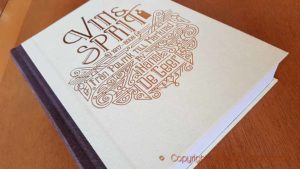 “On my bedside table is a brick-size book with the title “Wine & Spirits – From Politics to Market” (”Vin & Sprit – Från Politik till Marknad”). On almost 450 pages, the author Hans De Geer describes Swedish alcohol policy between 1917 and 2008. Got a tip from Per Karlsson to read this and it works well as a sleep aid in the evenings you need that kind of thing… But that brings my thoughts to the peculiar, not to say absurd approach we in Sweden have to alcohol. Yes, I know that everything is based on Swedes’ rampant drinking in the 18th century and that we who live in the “white liquor belt” cannot handle strong drinks in the same way as our neighbours in the brown (beer) and the red (wine) belts in Europe. But does it really have to be such a difference in the 2000s? That we cannot buy our meal drinks together with the food, if it is more than 3.5% by volume. That we are not allowed to go to a winery and buy some bottles to bring home as memory. That we are not allowed to show a glass, a hand, a corkscrew or even a checkered tablecloth in newspaper ads for wine!”
“On my bedside table is a brick-size book with the title “Wine & Spirits – From Politics to Market” (”Vin & Sprit – Från Politik till Marknad”). On almost 450 pages, the author Hans De Geer describes Swedish alcohol policy between 1917 and 2008. Got a tip from Per Karlsson to read this and it works well as a sleep aid in the evenings you need that kind of thing… But that brings my thoughts to the peculiar, not to say absurd approach we in Sweden have to alcohol. Yes, I know that everything is based on Swedes’ rampant drinking in the 18th century and that we who live in the “white liquor belt” cannot handle strong drinks in the same way as our neighbours in the brown (beer) and the red (wine) belts in Europe. But does it really have to be such a difference in the 2000s? That we cannot buy our meal drinks together with the food, if it is more than 3.5% by volume. That we are not allowed to go to a winery and buy some bottles to bring home as memory. That we are not allowed to show a glass, a hand, a corkscrew or even a checkered tablecloth in newspaper ads for wine!”
Read more in CM Hedin’s article on the alcohol monopoly on BKWine Magazine: Some thoughts on the absurd Swedish alcohol policy
Vermentino with ambition from Terenzuola
 “That Ivan Giuliani from the farm Terenzuola in northern Tuscany, is a special person with great talent, was already evident when I tasted his vermentino Fosso di Corsano. A wine to remember. A wine that is an experience. Those moments that you dream of as wine taster. Fosso di Corsano is a wine with depth. It is full-bodied, with a nose of pineapple and passion fruit, peach and citrus. But also a salinity and an acidity that binds all elements together, without taking over. It’s big and light at the same time. Despite the body, you just want to have more.”
“That Ivan Giuliani from the farm Terenzuola in northern Tuscany, is a special person with great talent, was already evident when I tasted his vermentino Fosso di Corsano. A wine to remember. A wine that is an experience. Those moments that you dream of as wine taster. Fosso di Corsano is a wine with depth. It is full-bodied, with a nose of pineapple and passion fruit, peach and citrus. But also a salinity and an acidity that binds all elements together, without taking over. It’s big and light at the same time. Despite the body, you just want to have more.”
Read more in Asa Johansson’s article on BKWine Magazine: Vermentino with ambition from Terenzuola
Discover excellence in the Rhone valley “Villages” at Domaine de Mourchon | Britt on Forbes
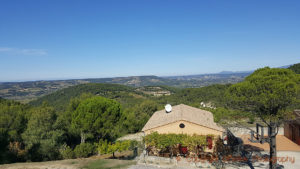 ”The vineyards of the Southern Rhône Valley are in the region of Provence. This is the western part of Provence where you find towns such as of Avignon, Orange and Nîmes. Names filled with the history of Popes and Romans. A landscape dotted with lavender fields, quaint villages and olive groves. It is a lovely region for a vacation, when that time comes. In the meantime, bring a piece of these beautiful places to your home by tasting the wines of Southern Rhône. “This part of France is a paradise for those looking for tasty, complex yet easy-drinking red wines made from Syrah and Grenache”, says Kate McKinley at Domaine de Mourchon. This high-quality family estate is close to the pretty town of Séguret, perched high on a hilltop. The vineyards are at an altitude of 1150 feet (350 meters).”
”The vineyards of the Southern Rhône Valley are in the region of Provence. This is the western part of Provence where you find towns such as of Avignon, Orange and Nîmes. Names filled with the history of Popes and Romans. A landscape dotted with lavender fields, quaint villages and olive groves. It is a lovely region for a vacation, when that time comes. In the meantime, bring a piece of these beautiful places to your home by tasting the wines of Southern Rhône. “This part of France is a paradise for those looking for tasty, complex yet easy-drinking red wines made from Syrah and Grenache”, says Kate McKinley at Domaine de Mourchon. This high-quality family estate is close to the pretty town of Séguret, perched high on a hilltop. The vineyards are at an altitude of 1150 feet (350 meters).”
Read more in Britt’s article on BKWine Magazine, originally published on Forbes.com: Discover excellence in the Rhone valley “Villages” at Domaine de Mourchon | Britt on Forbes
Zoom in on Col d’Orcias Rosso and Brunello di Montalcino
 “Lights, camera, action. The count’s wine tasting is done online. High school students are shut out of school and taught via Teams or Skype. Offices echo empty and meetings take place between adults in the same way as children’s teaching. Oenoforos, the big importer, refuses to sit still and arranges an enriching tasting with Count Francesco Marone Cinzano who entertains us via a link from Tuscany in Italy.”
“Lights, camera, action. The count’s wine tasting is done online. High school students are shut out of school and taught via Teams or Skype. Offices echo empty and meetings take place between adults in the same way as children’s teaching. Oenoforos, the big importer, refuses to sit still and arranges an enriching tasting with Count Francesco Marone Cinzano who entertains us via a link from Tuscany in Italy.”
Read more on these wines in SO Johansson’s and T Eriksson’s article on BKWine Magazine: Zoom in on Col d’Orcias Rosso and Brunello di Montalcino.
Organic, biodynamic and sustainable wine, an overview | part 1
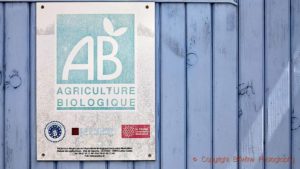 “More and more consumers are buying organic wines. Today, the organic vineyard surface in the EU is twice as large as it was 10 years ago. Demand for organic wine is likely to soon outstrip supply. But despite all this, it is not a question of a fundamental shift in wine growing. Conventional wine farming still dominates. When you travel through the wine regions today, you can’t help noticing all the grass and flowers that grow in the vineyards, in the rows between the vines. It is a sign that more and more producers are abandoning chemical weed control. And it’s not just organic growers who do it because they have to. Many “conventional” (meaning not organic) winegrowers have also realized the benefits of a green vineyard.”
“More and more consumers are buying organic wines. Today, the organic vineyard surface in the EU is twice as large as it was 10 years ago. Demand for organic wine is likely to soon outstrip supply. But despite all this, it is not a question of a fundamental shift in wine growing. Conventional wine farming still dominates. When you travel through the wine regions today, you can’t help noticing all the grass and flowers that grow in the vineyards, in the rows between the vines. It is a sign that more and more producers are abandoning chemical weed control. And it’s not just organic growers who do it because they have to. Many “conventional” (meaning not organic) winegrowers have also realized the benefits of a green vineyard.”
There is a big confusion about what organic, sustainable, biodynamic etc is. When not even the wine trade or wine writes get it right all the time how are then consumers supposed to manage? You will get an overview of it all in this first of Britt’s articles on BKWine Magazine: Organic, biodynamic and sustainable wine, an overview | part 1.
Read: To know more about this read our book on organic and biodynamic wines.
Uncorked: Good wines we have tasted recently, June 2020
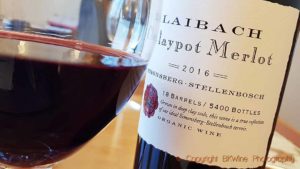 Uncorked: Under this heading, we collect various wines that we have tasted, and liked, recently. It can be wines that we have had during dinner at home, at wine tastings, press lunches, visits to vineyards, or other occasions.
Uncorked: Under this heading, we collect various wines that we have tasted, and liked, recently. It can be wines that we have had during dinner at home, at wine tastings, press lunches, visits to vineyards, or other occasions.
This month: Exclusive white Douro in limited edition, newly re-discovered and other very unusual grape varieties from the French Southwest, unusually tasty muscadet, several exciting reds from South Africa, natural wine from the Rhone Valley and a so-called solidarity wine from Languedoc. Read more in Britt’s article on BKWine Magazine: Uncorked: Good wines we have tasted recently, June 2020.
Cabernet Sauvignon: The World’s Most Popular Grape Variety | Britt on Forbes
Cabernet Sauvignon is now the grape variety with the biggest acreage in the world. Cabernet Sauvignon has long been responsible for some of the world’s most talked-about, appreciated and expensive wines. In Bordeaux, it is worshipped. In the 1990s, when California and other New World countries introduced Cabernet to wine drinkers around the world, the success was a given. How is it doing today? Are wine consumers still infatuated by Cabernet Sauvignon?
You will get an introduction and overview of this, the world’s most planted grape variety, in Britt’s article on BKWine Magazine, originally published on Forbes.com: Cabernet Sauvignon: The World’s Most Popular Grape Variety | Britt on Forbes.
Tips and advice on WordPress sites
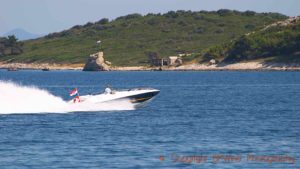 Our wine sites are all built in WordPress. It is a fantastic platform for building web sites, from the simplest using Blogger (or similar), which can be done without any technical knowledge at all, to large newspaper sites, developed by a whole team of technicians, designers and developers. BKWine Magazine and our other sites are somewhere in between these extremes. Since we are doing some work on these websites, we have collected some tips and tricks in two articles on BKWine Photography. It may be of interest to anyone who runs a site built on WordPress:
Our wine sites are all built in WordPress. It is a fantastic platform for building web sites, from the simplest using Blogger (or similar), which can be done without any technical knowledge at all, to large newspaper sites, developed by a whole team of technicians, designers and developers. BKWine Magazine and our other sites are somewhere in between these extremes. Since we are doing some work on these websites, we have collected some tips and tricks in two articles on BKWine Photography. It may be of interest to anyone who runs a site built on WordPress:
Wine tours
Some information about current and future wine tours with BKWine.
On our wine tours in the fall of 2020, a first chance to get out into the vineyards
 Although the development in Europe is good and overall there is good news we do not yet know exactly what the fall season will look like for our tours. It will certainly be easier to travel, especially in most countries in Europe. It is, of course, natural for many to hesitate to travel, which means that many of the tours that we planned for the fall will not be done. Equally, most of our custom tailor made tours have been postponed.
Although the development in Europe is good and overall there is good news we do not yet know exactly what the fall season will look like for our tours. It will certainly be easier to travel, especially in most countries in Europe. It is, of course, natural for many to hesitate to travel, which means that many of the tours that we planned for the fall will not be done. Equally, most of our custom tailor made tours have been postponed.
However, as it seems today, we will be making three or four tours to the wine regions in Europe this autumn. We are, of course, first of all happy that the health situation has stabilized so much that this is possible. We are also happy to be able to offer these wonderful trips to those of our customers who are keen to travel and want to visit a wine region this autumn.
Three of these tours will be on our Swedish language programme, Champagne, Piedmont and the Douro Valley.
One of the tours is on our English language programme: Bordeaux in September.
The tours are of course planned with special regard to the health situation, but above all they are designed to give you a very special experience in the vineyards and wine cellars in the autumn.
Please contact us if you have any questions.
European wine tours autumn 2020 and spring 2021
It is good news that it looks as if it will be possible to go ahead with a first new tour, after the period of lock-down, in the autumn of 2020. We also have tours planned for the spring of 2021. (And we have three winter wine tours that we present elsewhere.) Contact us if you have any questions.
Here’s what we currently have to offer the enthusiastic wine lover:
Bordeaux, behind-the-scene of grand chateaux | wine tour
 This is an exciting tour with many behind-the-scene visits to small and bigger chateaux in Medoc, Saint Emilion, Graves and Sauternes. Tastings of prestigious wines and magnificent lunches are included. Not to mention the beautiful city of Bordeaux.
This is an exciting tour with many behind-the-scene visits to small and bigger chateaux in Medoc, Saint Emilion, Graves and Sauternes. Tastings of prestigious wines and magnificent lunches are included. Not to mention the beautiful city of Bordeaux.
Champagne, sparkling wine at its best | wine tour
 Champagne is special. You can find sparkling wines elsewhere of course, but still, nothing beats champagne. Join us on this discovery tour to France’s most famous wine region, a charming place with a fantastic variety of growers, champagne houses and different styles of champagnes. Can you taste only champagne for three whole days? Yes, you can.
Champagne is special. You can find sparkling wines elsewhere of course, but still, nothing beats champagne. Join us on this discovery tour to France’s most famous wine region, a charming place with a fantastic variety of growers, champagne houses and different styles of champagnes. Can you taste only champagne for three whole days? Yes, you can.
Escape winter 2021 and come with us to the summer vineyards of the Southern Hemisphere | wine tours
No-one knows yet quite what the world will look like or what the possibilities for long-distance travel will be in the winter of 2021. We plan for and hope for that the health situation will continue to improve and that our three winter wine tours 2021 will go ahead.
We have three fantastic destinations on our winter wine tour programme: Argentina-Chile, New Zealand, and South Africa. Three exceptional and unique tours.
If you are interested in these tours, contact us for any questions you might have.
Chile and Argentina
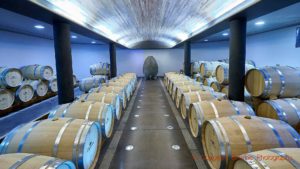 South America’s two largest wine countries offer a great variety in terms of wine, food, landscape and experiences. We travel from hot and dry Mendoza to the cool coast of Chile. We go by bus over the mighty Andes. We visit big cities like Buenos Aires and Santiago, the port cities of Valparaiso and, of course, many vineyards, large and small. An unforgettable tour.
South America’s two largest wine countries offer a great variety in terms of wine, food, landscape and experiences. We travel from hot and dry Mendoza to the cool coast of Chile. We go by bus over the mighty Andes. We visit big cities like Buenos Aires and Santiago, the port cities of Valparaiso and, of course, many vineyards, large and small. An unforgettable tour.
New Zealand
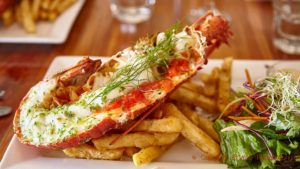 New Zealand is a new wine country. Wine was made here already in the 19th century, but it did not take off until the 1980s. New Zealand’s wine industry is an incredible success story. Come with us and discover this very different New World country with genuinely unique wines. And a unique nature.
New Zealand is a new wine country. Wine was made here already in the 19th century, but it did not take off until the 1980s. New Zealand’s wine industry is an incredible success story. Come with us and discover this very different New World country with genuinely unique wines. And a unique nature.
South Africa
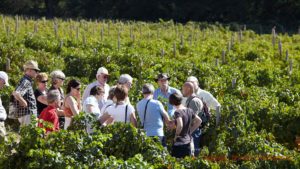 South Africa as a country offers the visitor amazing experiences. And as a wine country even more. Today the producers want to show you that they can make wines with character, world-class wines, and not just simple, straightforward wines. And they certainly can. Vineyards with old vines are re-discovered and cared for. Grapes such as the superb chenin blanc are being used for quality wines. Experience the new South Africa with us.
South Africa as a country offers the visitor amazing experiences. And as a wine country even more. Today the producers want to show you that they can make wines with character, world-class wines, and not just simple, straightforward wines. And they certainly can. Vineyards with old vines are re-discovered and cared for. Grapes such as the superb chenin blanc are being used for quality wines. Experience the new South Africa with us.
- South America, Chile and Argentina, January 18–31, 2021
- New Zealand, February 18–March 5, 2021
- South Africa, March 17–26, 2021
Don’t be an egoist! Share with your friends and other wine enthusiasts! Forward the Brief to your friends! Suggest that they sign up for a free subscription !
© Copyright BKWine






